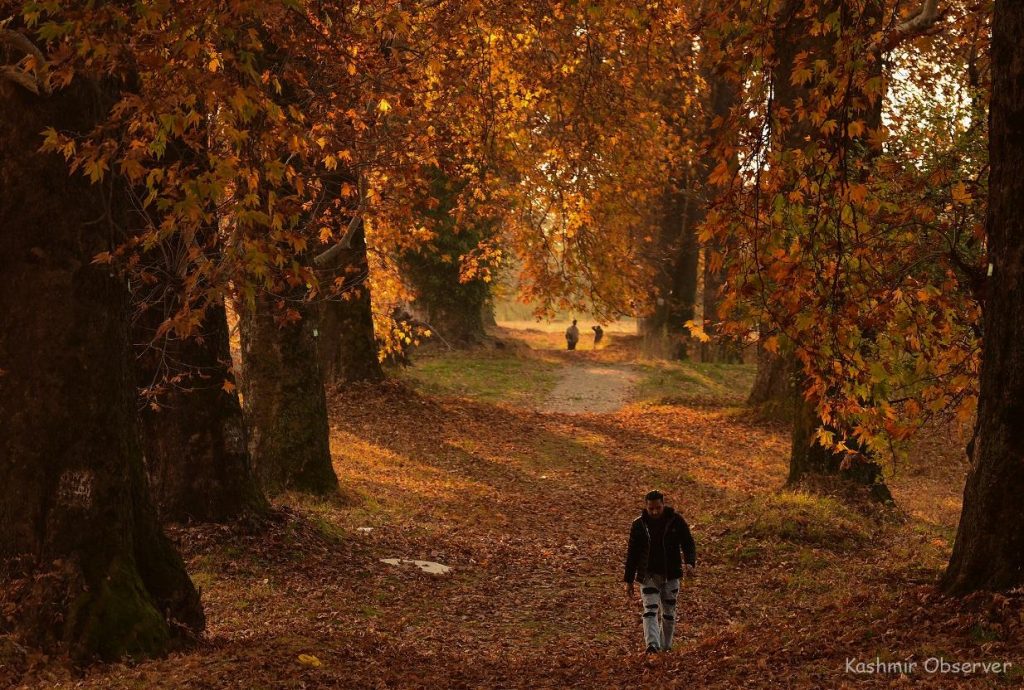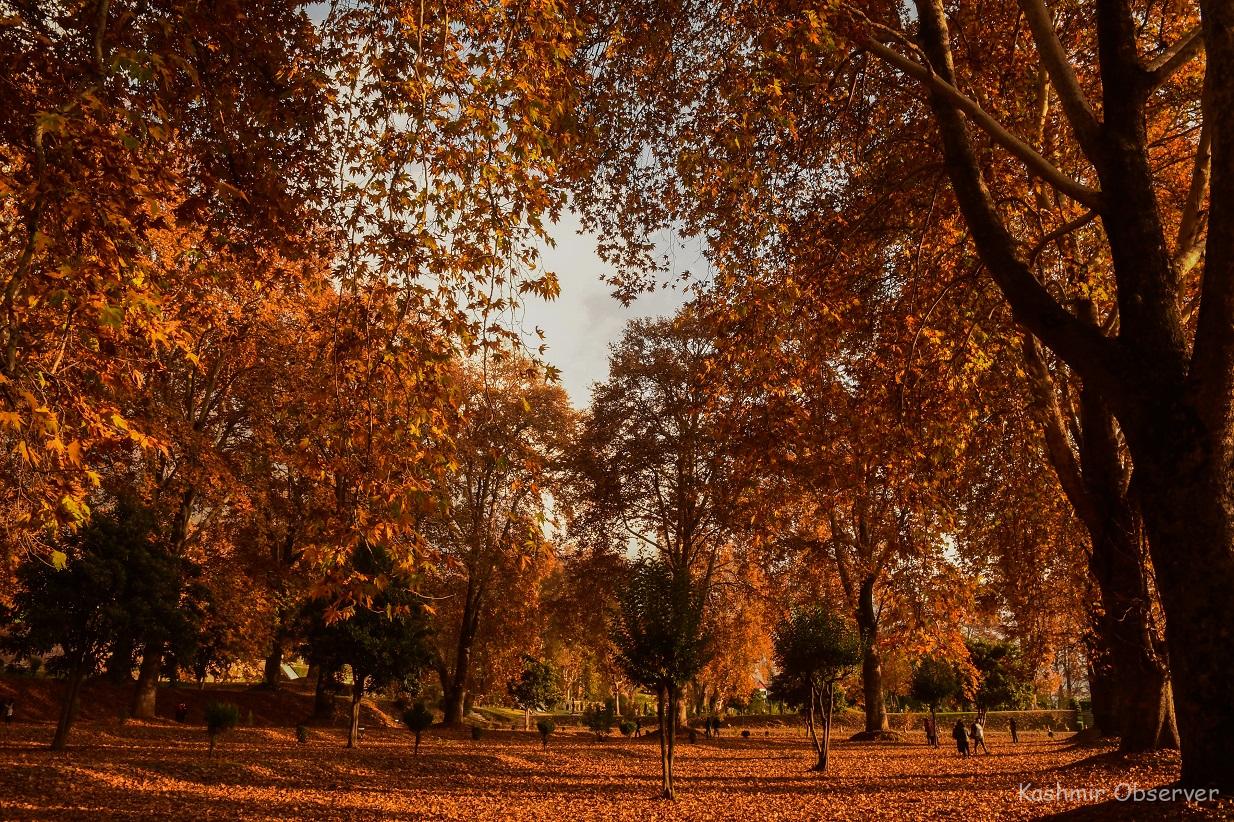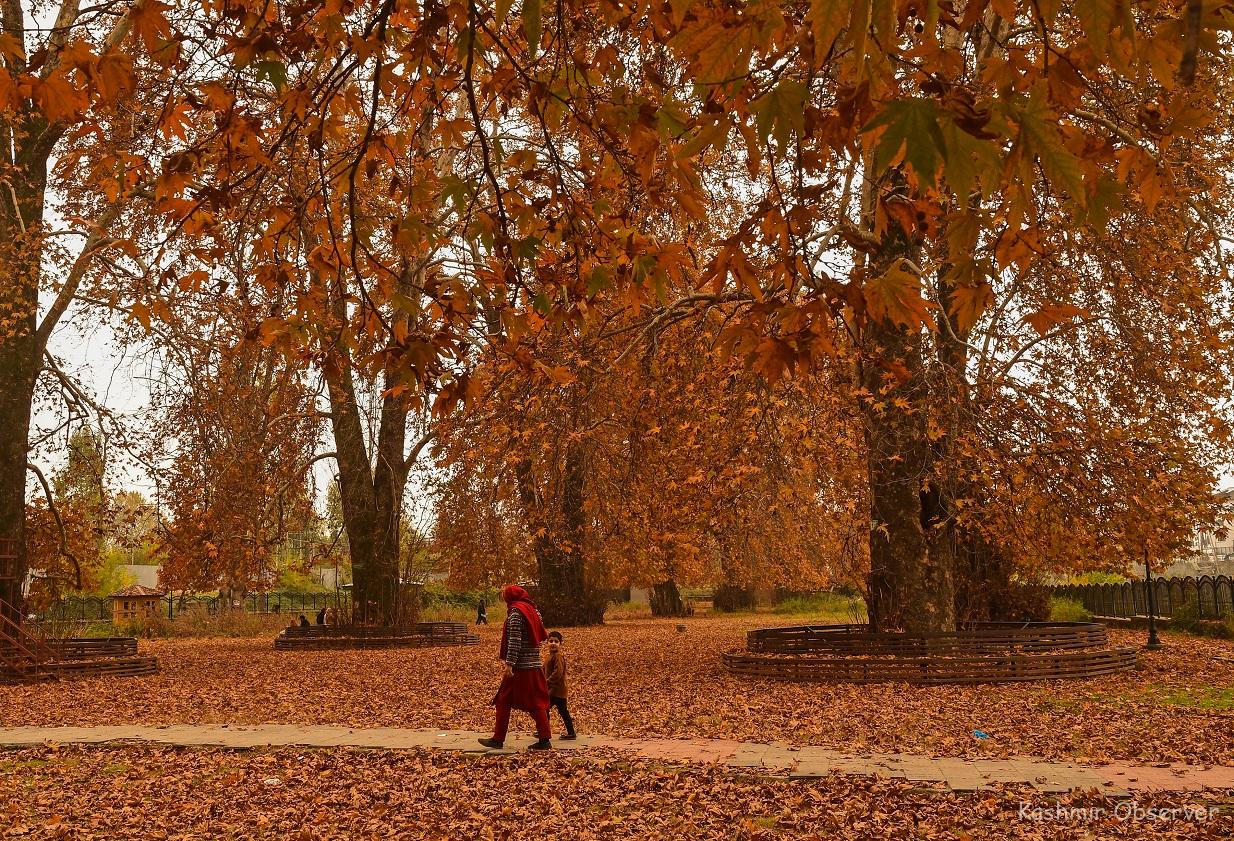
By Mohammad Hanief
Kashmir, often called “Heaven on Earth,” is the most loved tourist destination across the world. Whether it’s summer in Kashmir, monsoon, autumn, or winter, tourists love to enjoy the scenery and landscapes but, when it comes to those travel enthusiasts who love to witness the cool temperature and vibrating colours of the falling flowers, there is no better time to visit Kashmir other than the autumn season.
Autumn is called ‘Harud’ in Kashmiri – which refers to the time of harvest, and is visually the most awe striking of all seasons. This is also the shortest of all seasons, stretching between mid- October to mid-November. The autumn season in Kashmir begins from September and lasts until November. The temperature during the autumn season stays between 9°C and 20°C, resulting in cold and sweet winds. During that season, the leaves of trees turn golden and reddish, creating a breathtaking view for visitors, making it the best season to visit Kashmir.
Kashmir in the Autumn season is a breathtaking and awesome display of brilliant colours and beautiful landscapes. The atmosphere evolves into a fascinating artwork of golden-hued trees, glistening rivers, and mountain peaks covered in snow, which creates an enchanting environment that attracts hundreds and thousands of visitors.
On normal days, travellers adhere to these gardens during the summer season to relax underneath the shades of leafy chinar leaves, but when it comes to October, these dazzling autumn leaves attract a lot of tourists, especially newly married couples, travel enthusiasts, and filmmakers.
Autumn in Jammu and Kashmir is quite short, especially in Jammu. After an extremely hot July, August welcomes the humid and restless monsoon, and September experiences the anxiety of its absence. It’s the October month, which farewells the summer and starts celebrating summer like falling in love for the first time.
The Autumn season in Kashmir is highlighted by a comfortable drop in the temperature and an easy transition from monsoon to winter. The surrounding area is frequently visited by tourists during this time of year due to its magnificent landscapes and vibrant greenery.
Kashmir has again become the first choice of international tourists. Over fifteen thousand foreign tourists have visited the Kashmir Valley in the first six months of 2023. While the number of tourists coming to Kashmir has broken all previous records, at the same time, foreign tourists have kept their date with Kashmir its all-time high arrival of foreign tourists in the Valley in the last three decades. In 2022, the total number of foreign tourists who visited the Kashmir Valley was around 4,000.
International travellers are once again flocking to the enchanting and picturesque destination of Kashmir. From January 1 to June this year, an impressive surge of over 15,000 foreign tourists has reconnected with the Valley, and authorities expect this number to increase significantly by the end of the year. The sharp increase indicates a growing attraction towards Kashmir as a preferred destination among international travellers.
The government of Jammu and Kashmir hosted a G20 meeting in May. Ambassadors and foreign delegates from around 17 countries participated in these meetings with a focus on tourism. The government is hopeful that G20 meetings held in Srinagar would translate into more promotion of Kashmir tourism across the world. The numbers have already crossed all the previous records and the government is also planning to do international promotions, especially in Southeast Asian, Middle East and North American countries.
It is late autumn in Kashmir, and villagers around Pampore – also known as the saffron town of Kashmir – are picking the delicate flowers to fill their wicker baskets.
Kashmir’s saffron (Crocus Sativus Kashmirianus), known for its flavour and colour, is harvested just once a year from late October till mid of November in Autumn season as it has many uses in industries such as food, pharmaceuticals, cosmetics and perfumery as well as in the textile dyes. Saffron harvesting season in Kashmir runs in late October-early November. One of the best destinations to start your purple hunt is Pampore, nicknamed Saffron Town of Kashmir.
In Autumn, the entire Kashmir valley is bathed in different hues of red, brown and orange. All the leaves change into multi-colored works of art to eventually fall away. Autumn is indeed Kashmir’s golden season and the sights are a pleasure for the discerning eyes.
This season is absolutely perfect for taking beautiful scenic photos and spending time outdoors. While camping, exploring, long walks and drives along the poplar-lined boulevards are popular among nature lovers, the children are often seen playing cricket under the shade of the mighty Chinar trees.
A little nip in the mornings and evenings and the gentle warmth of the autumn sun are refreshing while evenings are a perfect time to sit together in the evening with friends or family around the bonfire. Chinars across the Valley attract tourists as well as locals during autumn when its leaves turn blood-red, mauve, orange, beige and brown before these eventually fall on the ground during the winters.
The Mughal Gardens on the banks of Dal Lake are attracting tourists who want to witness the hues of Chinar that started changing in the middle of October and have these days acquired bright colours.
The beautiful atmosphere of the region is enhanced by the coolness in the air, mild sunshine throughout the day, cold mornings and evenings and burning poplar trees all around during this period. Mughal Gardens are the first choice of tourists during this season as these gardens are filled with poplar trees.
The proactive promotions of Jammu and Kashmir tourism department both domestically and internationally, has played a vital role and collaborative marketing campaigns, roadshows, and participation in global tourism events have helped in projecting Kashmir as a must-visit destination. The pristine natural beauty, diverse cultural heritage, and unique experiences offered by the Valley have also contributed to its allure.
The author can be mailed at m.hanief@gmail.com – X (Twitter): @haniefmha
Follow this link to join our WhatsApp group: Join Now
Be Part of Quality Journalism |
Quality journalism takes a lot of time, money and hard work to produce and despite all the hardships we still do it. Our reporters and editors are working overtime in Kashmir and beyond to cover what you care about, break big stories, and expose injustices that can change lives. Today more people are reading Kashmir Observer than ever, but only a handful are paying while advertising revenues are falling fast. |
| ACT NOW |
| MONTHLY | Rs 100 | |
| YEARLY | Rs 1000 | |
| LIFETIME | Rs 10000 | |











